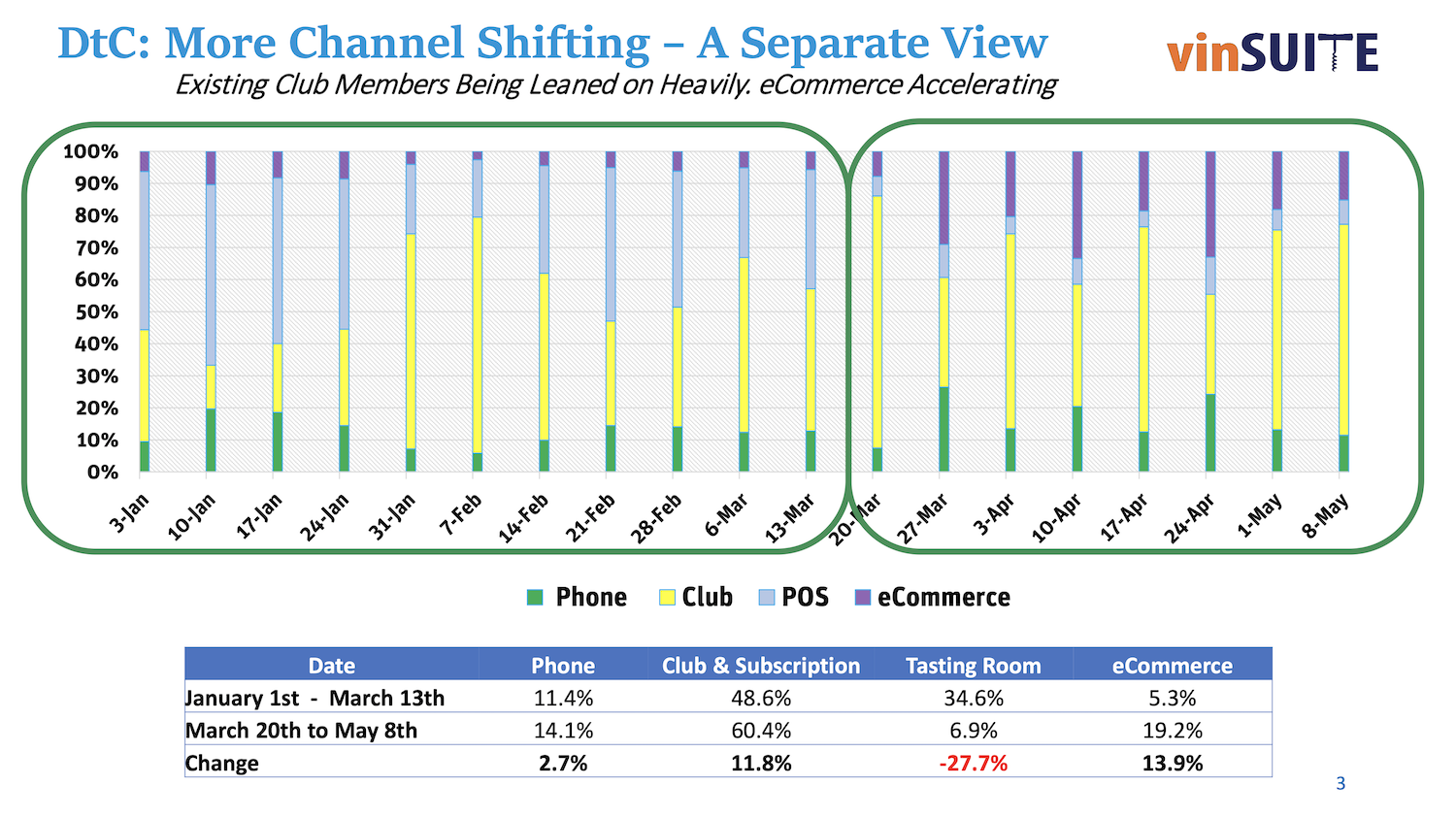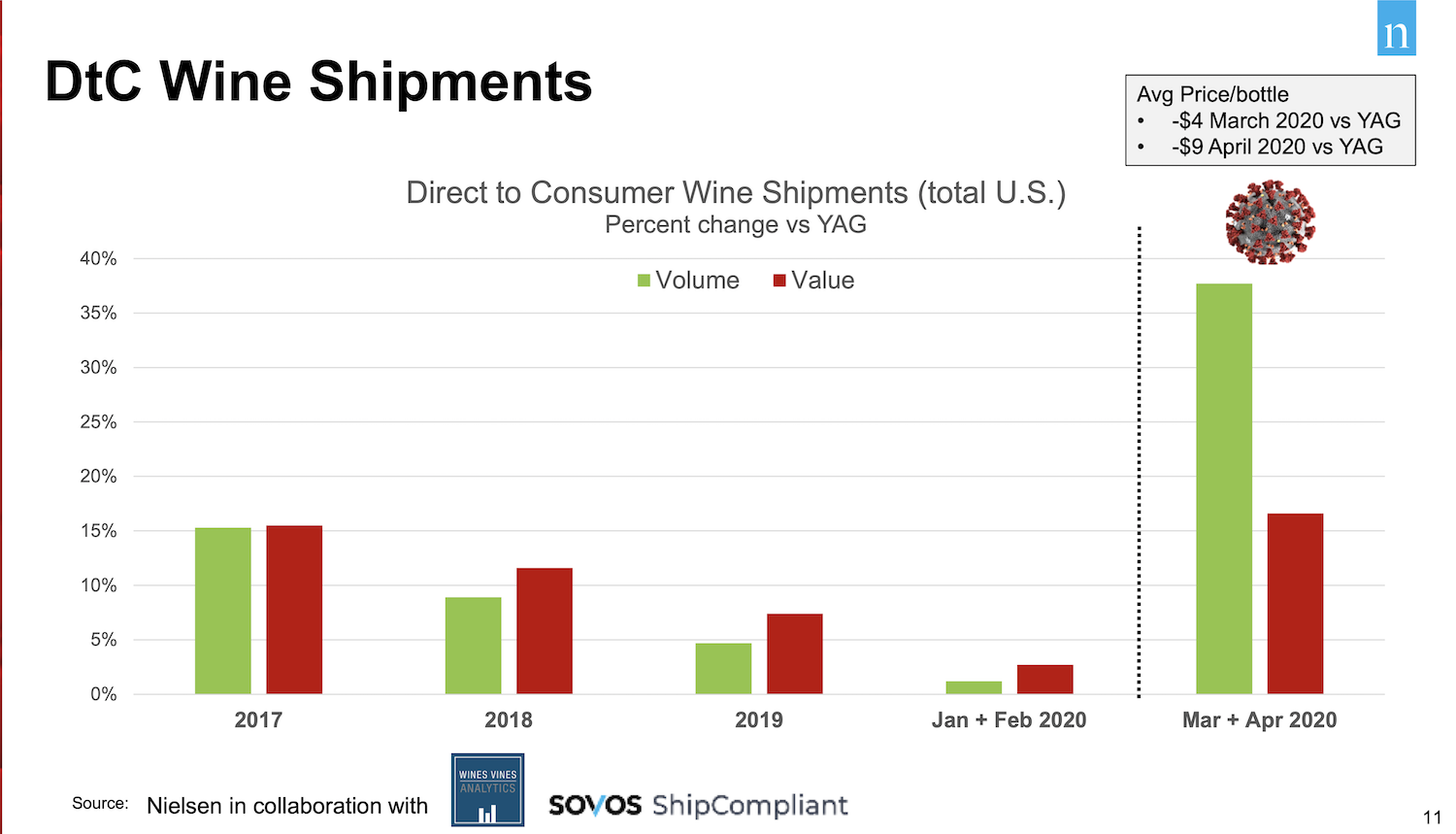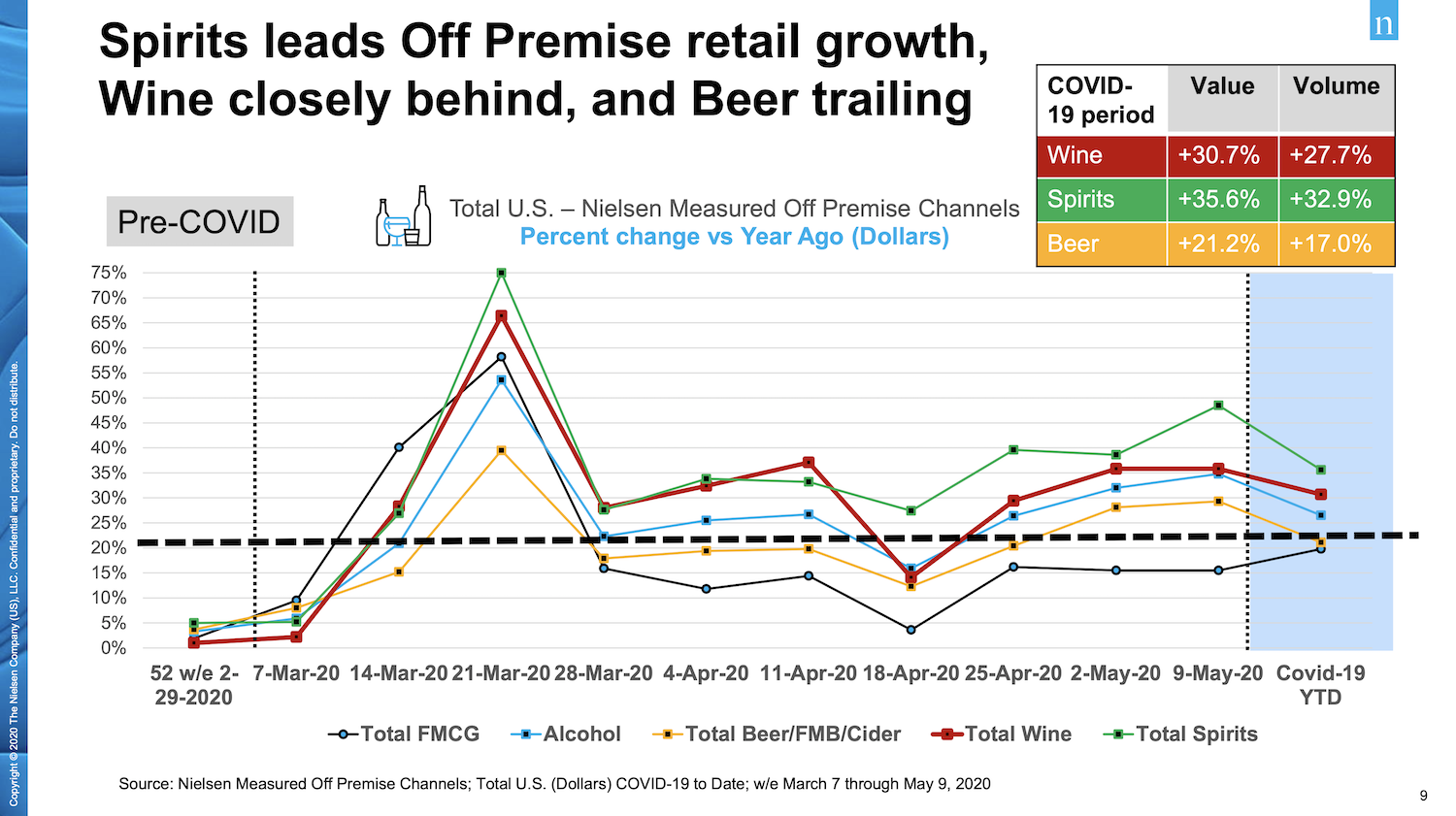The shutdown has brought a severe channel shift to the wine industry. Some wineries are thriving, some are not. This leaves us with the question, does having a tasting room located in wine country make sense? Don’t get me wrong, there are many established wineries that are incredible to visit and will stand the test of time. However, with 900 wineries between the Napa Valley and Sonoma County, we should ask this question. Here’s why…
- The costs of maintaining real estate, staff and delivering on an experience are expensive. What if you could generate the same revenue you generate from those sales in ecommerce instead and not have to pay these overheads?
- Would you fly or drive hours to buy or discover a new fragrance, fashion brand, beauty, tech, gourmet food item? In any other industry heavy reliance on a storefront would not happen.
- We are now seeing just about every large corporation and tech company asking staff to work from home. So, if people can live anywhere, travel less and spend more time online, how are you changing your business to adapt? The consumer has already changed how they purchase and how they travel.
- With an economic slowdown, people having less money for travel, fear around getting on a plane, and unemployment at an all-time high, would you invest in wine tourism?
- This brings into question what role the tasting room should play in your business? Weekend only, seasonal, not at all?
Silicon Valley Bank’s wine industry call yesterday with Rob McMillan and his panel reiterated my thoughts.
- Consider if it makes sense to reopen your tasting room: The tasting room model was breaking down. The myopic mindset that people should come to us has to change as people live online now and travel less.
- Demand for wine will continue: The industry looks bright when wineries follow where the consumer is buying and not what they have done in the past. e.: continued focus on ecommerce, phone, SMS and off premise, market/winemaker visits once travel is allowed.
- Discounting: Don’t do it if you can afford it. This ultimately devalues your brand and is NOT a strategy. The huge short-term spike in volume of shipments also shows a significant reduction in average price per bottle indicating mass discounting and greatly reduced overall revenue based on previous months. In March & April DTC shipments by volume is up 37%, but sales revenue was only up by 17% in the same period.
- Millennials: While this segment is attractive, these consumers may be more financially constrained that ever before, and as we already know frequently switching between other categories. Many wineries targeting millennials solely may want to diversify this approach or look at your pricing model again.
- On Premise: 50+ consumers may not come back to restaurants if at all and these people make up a large chunk of wine sold at restaurants.
- Channel shifting continues: As expected ecommerce continues to accelerate, and existing club members are being leaned on heavily. Ecommerce is up 19%, phone sales 14% and clubs up 60% since March 20. (SVB, vinSuite)
- Off Premise: Wine sales saw huge spike in the week of March 21, due to panic buying and discounting. This has now waned, and May numbers show off premise sales to be up 30% YOY. Spirits lead the alcohol category growth as the largest increase in change at 45%. Alcohol overall surpasses FMCG by 20%. (Nielsen)
What can you do to THRIVE? More takeaways from the SVB panel:
- Avoid discounting and add value: Connect in a meaningful way – this is much for valuable than the erosion of your brand. Shipping is often a pain point; you can encourage more bottles sold with minimum bottle order.
- Data hygiene is important. There are very few wineries paying attention to data and customer insights. Look at new customers, prospects and long-time customers and how you communicate to them differently. Re-engineer your customer’s journey and meet them where they’re at. Once size does not fit all so tailor your approach. Find out how they want to hear from you whether it is SMS, email, direct mail. It all comes down to relationships and your database is a tool to help you manage and build better ones. Understand what is going on in each of your sales channels.
- Celebrate customers: Send a postcard for birthdays. Not being able to celebrate these special moments with friends and in restaurants has been an unfortunate memory. Offer value in the card.
- Encourage referrals: Giving your customers friends codes to share for first time purchases. They could trigger a value add, or first purchase discount.
- Summer shipping: People want to drink wine year-round so find a way to get them the wine, even in the peak of summer, even in the hot states. Investigate what you need to do, and possibly pay for, in order to retain your customers during the summer heat. If you can’t ship to them, they will go to someone who can.
- Go to them: Meet the customer where they are. When the country opens up for travel plan to visit the places where your largest chunks of customers are. Create valuable experiences for them in their city.
- Support your on-premise channel: Many restaurants will not survive on 25 percent occupancy. Customers aged 50+ may not return any time soon, 45% people that buy wine on premise are 55+. What does this mean for wine lists? Lower priced wines and less selection? More opportunities on their “to go” list?
- Tasting rooms: Anyone coming to wine country when travel is permitted wants to relax, have fun, escape, and enjoy a laid-back atmosphere. Experiences need to be thought through and meaningful. Adding a food truck (if allowed in your county) could add value. Laws appear to be relaxing on this post pandemic which are worth looking into.
ALL DATA COURTESY OF SILICON VALLEY BANK



